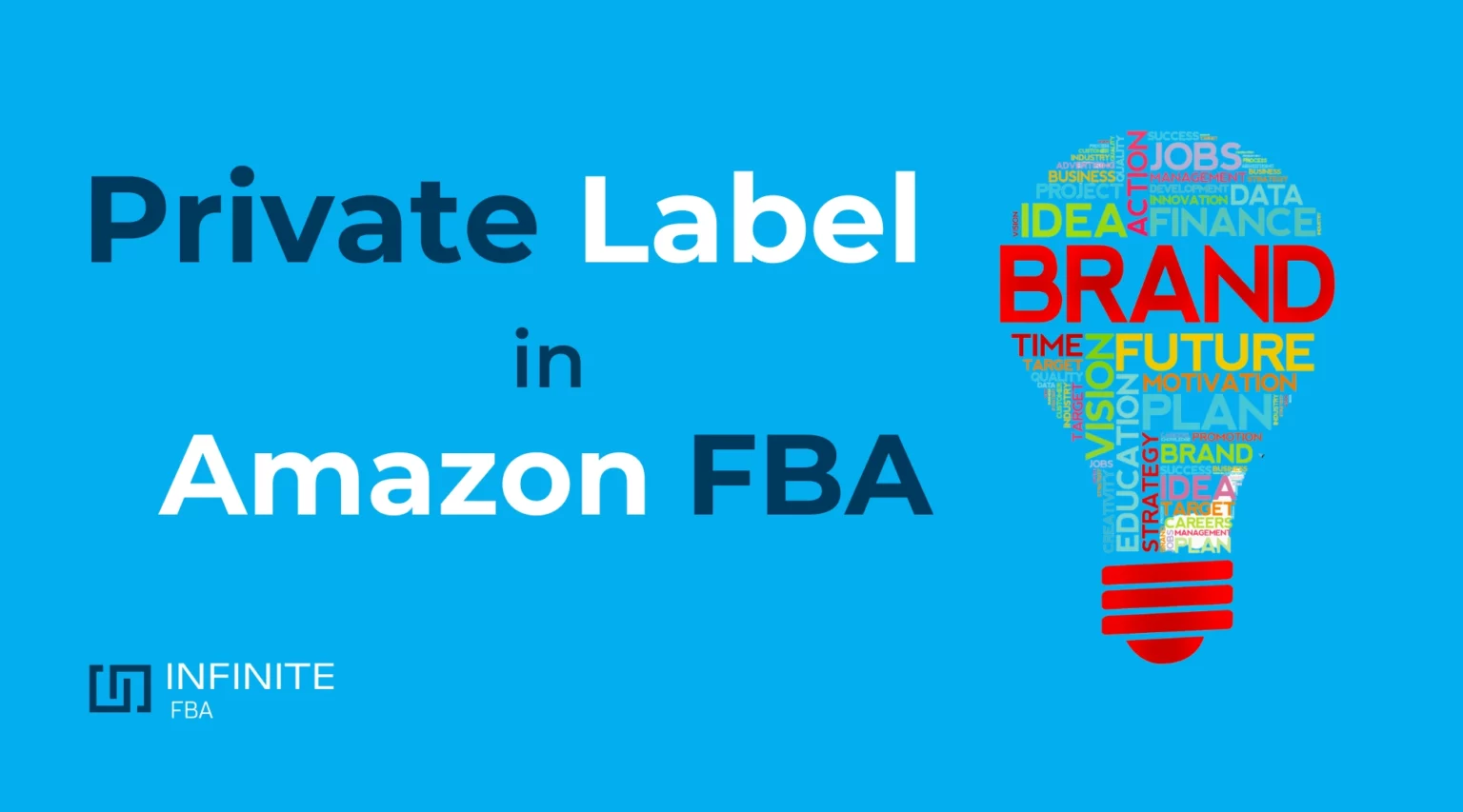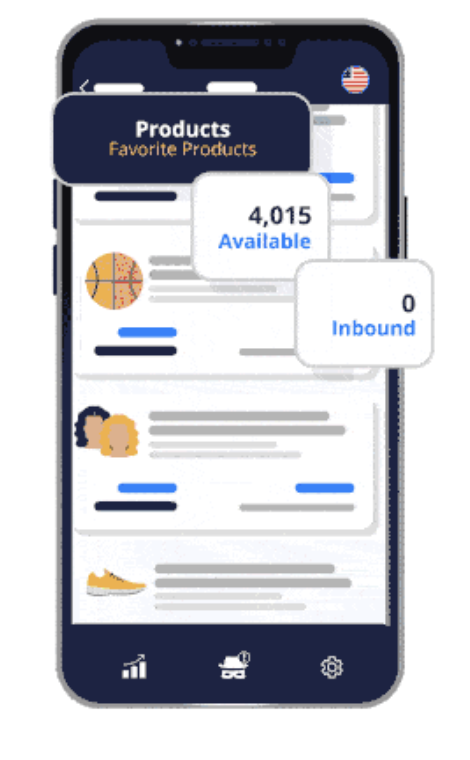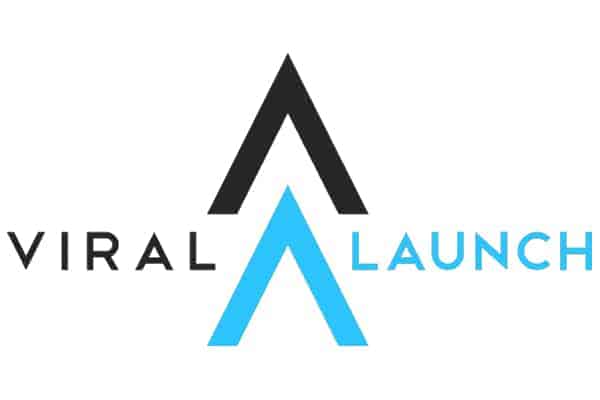As an experienced Amazon FBA seller, I’ve had the privilege of witnessing the incredible potential that lies within private label selling on Amazon. In this article, I aim to shed light on the power of Amazon FBA Private Label and provide you with the knowledge and insights to embark on your own successful journey.
What is Private Label on Amazon FBA?
Private label selling on Amazon is an ingenious business model that allows you to source generic products from manufacturers and transform them into your own unique brand. Instead of selling established brands, you have the opportunity to create your own line of products, tailor-made to meet the demands and preferences of your target audience.
What is the Benefit of Private Label?
The benefits of private labeling selling are immense:
Firstly, it opens the doors to higher profit margins. By sourcing products directly from manufacturers and eliminating intermediaries, you have more control over your costs and can set competitive prices that maximize your profitability.
Secondly, the private label model gives you the invaluable advantage of brand ownership. Building a brand allows you to establish a loyal customer base, cultivate trust, and develop a lasting relationship with your consumers. You have the freedom to shape your brand identity, values, and messaging, creating a unique offering that stands out in the market.
Furthermore, Amazon private label enables you to differentiate your products in a crowded marketplace. You can add value through innovative features, superior quality, or enhanced packaging. This differentiation not only attracts customers but also allows you to command higher prices and build a reputation for excellence.
Is Private Labeling Profitable?
The potential profitability of private labeling on Amazon FBA depends on a number of factors:
- Product Selection: Some products have higher profit margins than others, and some are more in demand. Research is key here.
- Cost Control: The cost of producing and shipping your product, Amazon’s fees, and any advertising or promotional costs all eat into your profit margin.
- Price Setting: Your ability to set a price that customers are willing to pay, while still covering your costs and leaving room for profit.
- If there are many other sellers offering similar products, you may need to lower your price or increase your advertising spend to get noticed, both of which can reduce profitability.
Getting Started with Amazon Private Label
Researching and selecting a profitable product niche

When diving into the world of Amazon private label, one of the crucial steps is researching and selecting a profitable product niche. This process involves thorough market research to identify product categories that offer both sufficient demand and manageable competition. Allow me to guide you through this vital stage.
To begin, leverage powerful market research tools such as Jungle Scout or Helium 10. These tools provide invaluable data and insights into the Amazon marketplace, helping you uncover hidden gems and identify trending products. By analyzing factors like sales volume, competition level, and customer reviews, you can make informed decisions regarding which niches to explore.
Pay close attention to products with consistent demand and steady sales patterns. Look for opportunities where you can add value, differentiate your offerings, or target a specific customer segment. Keep in mind that while it’s tempting to chase after the hottest trends, it’s often wiser to seek out niches with evergreen potential, as they provide long-term stability and growth opportunities.
Finding reliable suppliers and manufacturers
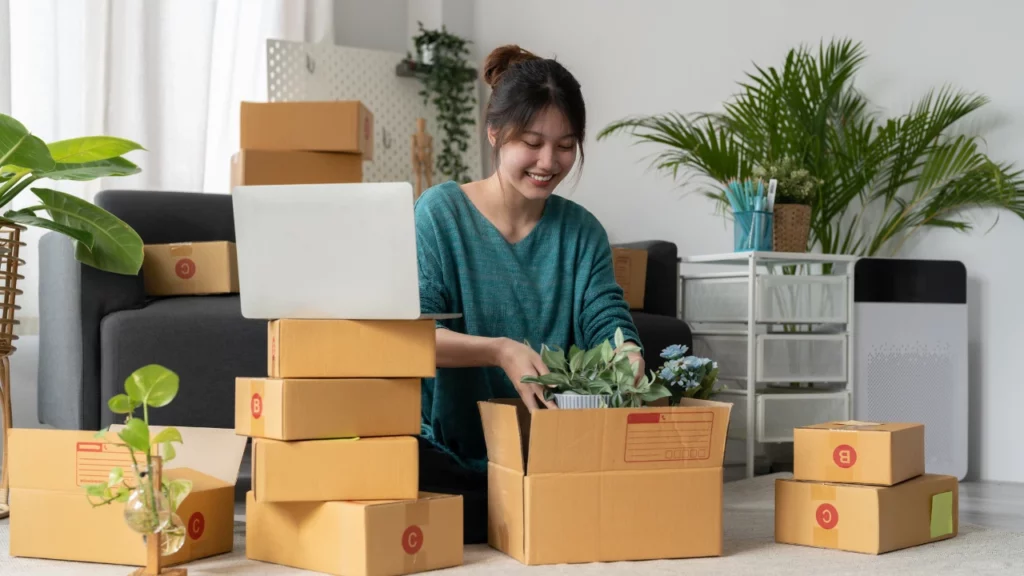
Once you’ve identified a profitable product niche, it’s time to find reliable suppliers and manufacturers who can bring your private label vision to life. There are several sourcing options available, including overseas suppliers on platforms like Alibaba or domestic manufacturers.
When evaluating suppliers, credibility and product quality should be your top priorities. Look for suppliers with a proven track record, positive reviews, and a strong reputation for delivering high-quality products. You can request samples to assess the product’s quality firsthand and ensure it aligns with your brand’s standards.
Additionally, negotiation skills are essential when securing favorable terms with suppliers. Aim for a balance between price, product quality, and minimum order quantities. Remember, building a long-term relationship with your suppliers can lead to better pricing, improved product customization options, and smoother operations down the line.
Branding and packaging your private label products

In the competitive Amazon marketplace, creating a strong brand identity is paramount. Your brand sets you apart from the competition and serves as a trust signal for potential customers. Therefore, invest time and effort into developing a unique brand identity that resonates with your target audience.
Consider factors such as your brand’s values, mission, and voice. Craft a compelling brand story that engages customers and builds an emotional connection. A well-defined brand image will help you stand out and build customer loyalty.
Equally important is designing attractive packaging that catches the eye of shoppers. Your packaging should align with your brand’s aesthetic, clearly convey the product’s value, and provide essential information to customers. Strive for packaging that not only protects the product but also enhances its perceived value, making it an appealing choice among a sea of competitors.
By conducting thorough research, finding reliable suppliers, and investing in branding and packaging, you lay a solid foundation for your private label business on Amazon. These crucial steps will help you create a unique offering that resonates with customers and sets the stage for future success. Now, let’s move forward and explore the next steps in your Amazon private label journey.
How to Launch Your Private Label Product on Amazon
Setting up an Amazon seller account
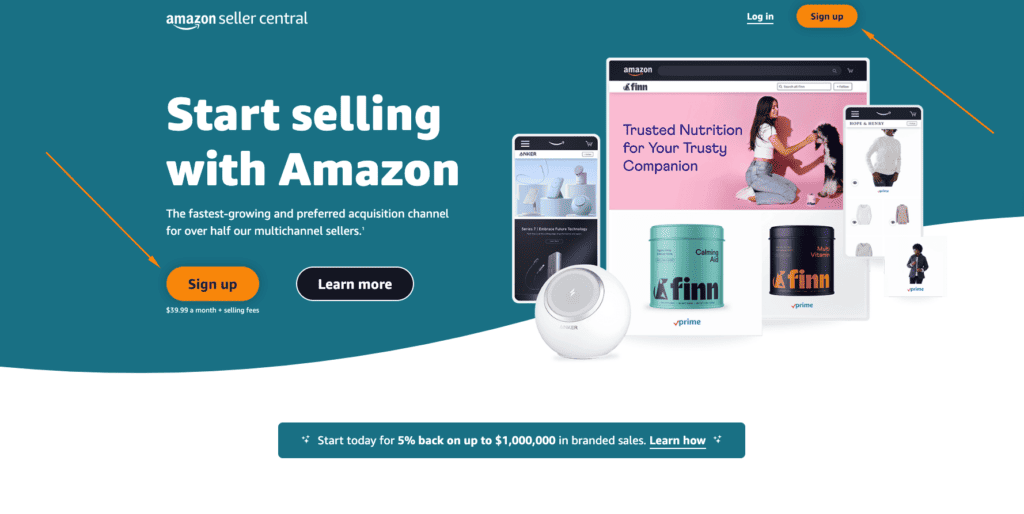
Creating an Amazon seller account is a straightforward process, and I’ll walk you through the necessary requirements and steps to get started:
- Determine whether you want to register as an individual seller or a professional seller. Individual sellers are suitable for those who plan to sell a small number of products, while professional sellers are better suited for those aiming to scale their business and take advantage of additional features and tools.
- Visit the Amazon Seller Central website and follow the prompts to register. You’ll be asked to provide basic information such as your business details, contact information, and payment method. Additionally, Amazon may require certain documentation, such as proof of identity or business registration, to verify your account.
- Familiarize yourself with the Seller Central dashboard, where you can manage your inventory, track sales, and access various seller tools and resources. Take the time to explore the platform’s features and settings to optimize your selling experience.
Product listing optimization
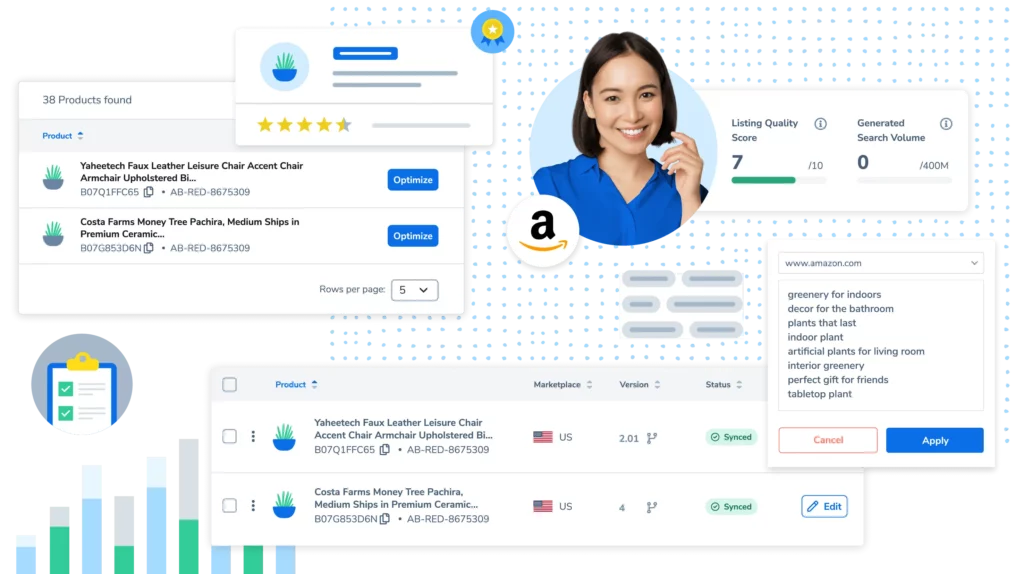
Optimizing your product listings is essential to maximize your visibility, attract potential customers, and drive sales. Here are some key factors to consider when optimizing your product listings:
Compelling titles and descriptions: Craft clear, concise, and compelling titles that accurately describe your product and incorporate relevant keywords. Focus on highlighting the product’s unique features and benefits. Similarly, write detailed and persuasive product descriptions that provide valuable information and answer potential customer questions.
High-quality images: Images play a crucial role in convincing customers to make a purchase. Invest in professional product photography that showcases your product from various angles, highlights key features, and accurately represents its quality. High-resolution images with a white background tend to perform well.
Strategic keyword incorporation: Research and identify relevant keywords for your product using tools like Helium 10 or MerchantWords. Incorporate these keywords naturally throughout your listing, including in titles, bullet points, and descriptions. Be mindful of keyword stuffing and maintain readability.
Implementing effective pricing strategies
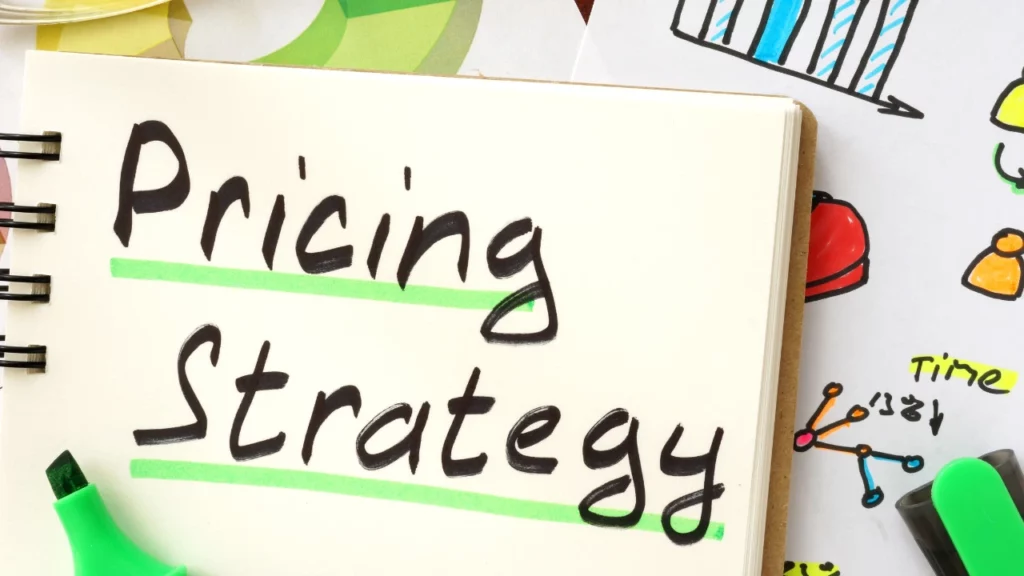
Pricing your products strategically is crucial to remain competitive and maximize profitability. Consider the following strategies when setting your prices on Amazon:
Cost-based pricing
Calculate your total costs, including manufacturing, packaging, shipping, and Amazon fees, and ensure your prices cover these expenses while providing a suitable profit margin. Factor in any future adjustments or discounts you may offer.
Competitor-based pricing
Research your competitors’ pricing and position your products accordingly. Take into account factors like product quality, features, and customer reviews. Be mindful of undercutting prices excessively, as it can lead to a race to the bottom and compromised profitability.
Promotions, discounts, and Amazon pricing tools
Utilize Amazon’s promotional tools, such as Lightning Deals or Coupons, to attract customers and generate sales. Temporary price reductions or bundle offers can create a sense of urgency and encourage purchases. Additionally, consider leveraging Amazon’s automated pricing tools, like “Automate Pricing,” to dynamically adjust prices based on market conditions and competitor activity.
Launching your private label product on Amazon requires careful attention to detail, from setting up your seller account to optimizing your product listings and pricing. By following these steps, you’ll be well on your way to increasing your product’s visibility, attracting customers, and achieving success on the Amazon marketplace. Now, let’s move forward and explore effective marketing and promotion strategies for your private label products.
Key Takeaways
Private label selling on Amazon offers numerous advantages and endless possibilities for growth. By creating your own brand, you gain control over your products, pricing, and brand image. This ownership translates into higher profit margins, the ability to differentiate your products in a crowded marketplace, and the potential to build a loyal customer base.
Remember, building a successful private label business on Amazon takes time, dedication, and perseverance. Stay focused, adapt to challenges, and remain committed to delivering exceptional value to your customers.
Now, armed with knowledge and inspiration, it’s time to take action. Start researching profitable product niches, source reliable suppliers, and embark on your private label journey on Amazon. The opportunity for financial freedom, brand ownership, and personal fulfillment awaits.
FAQs about Amazon Private Label
Is Amazon private label risky?
Yes, Amazon private label does carry risk. While it can be profitable, it also requires substantial investment in inventory and potentially advertising, without any guarantee of sales. You face the risk of low demand or stiff competition, either of which can result in lower-than-expected sales. Additionally, any changes in Amazon’s policies or fees could potentially impact profitability.
How much investment is required for Amazon FBA private label?
The investment required for Amazon FBA private label can vary widely, depending on factors such as the cost of your product, the quantity you order, shipping costs, and marketing costs.
A common range suggested by experienced sellers is between $2000 and $10,000 for initial investment. This includes the cost of initial inventory, product photography, branding, packaging, shipping to Amazon’s warehouses, and initial marketing efforts. However, the costs can be lower or higher depending on your specific situation.
Do you need a trademark to do private label on Amazon?
While having a trademark isn’t strictly necessary to sell private label products on Amazon, it is highly recommended. Registering a trademark for your brand helps protect your product from counterfeiters and copycats.
In addition, having a registered trademark allows you to enroll in Amazon’s Brand Registry, which gives you access to enhanced brand content, sponsored brand advertising, and better protection against counterfeit listings.
Is private labeling the same as dropshipping?
No, private labeling and dropshipping are not the same. With private labeling, you create your own brand and have your products manufactured under that brand. You purchase inventory up-front, which is then sent to Amazon’s warehouses for fulfillment.
Dropshipping, on the other hand, involves selling products that you don’t actually stock yourself. When you make a sale, you purchase the product from a third party and have it shipped directly to the customer. This means you don’t have to deal with storing inventory, but you have less control over product quality and shipping times.

